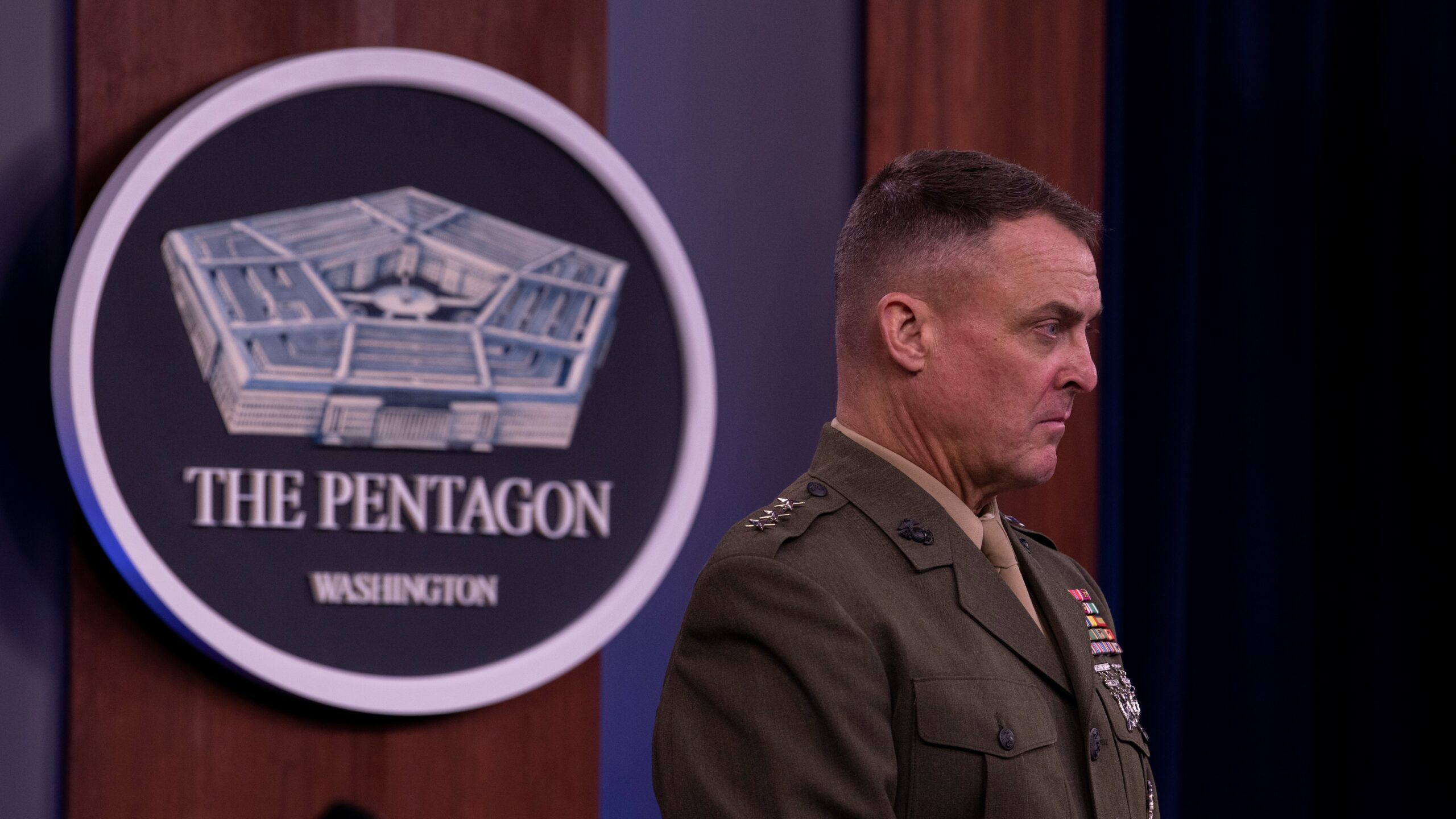
Joint Artificial Intelligence Center director U.S. Marine Corps Lt. Gen. Michael Groen, speaks during a press briefing, the pentagon, Washington, D.C., April 9, 2021. (DVDS)
WASHINGTON: The Joint Artificial Intelligence Center, a high-profile focus point for AI adoption across the Pentagon, will cease to exist come June 1, as it and two other offices are rolled under the newly created Chief Digital and Artificial Intelligence Officer.
Two other key parts of the Pentagon’s technology network will also be subsumed officially into CDAO at the start of the month, when the new office reaches its full operational capability: the Defense Digital Service, which provides rapid technology solutions across the department, and the Office of Advancing Analytics, or ADVANA. In all three cases, the personnel who make up the offices are expected to remain as part of the CDAO staff, but will be diffused with the office stovepipes removed.
“The Office of the Chief Digital and Artificial Intelligence Officer is the successor organization to the Joint Artificial Intelligence Center,” CDR Sarah Flaherty, spokesperson for the CDAO, told Breaking Defense. “CDAO reached initial operating capability on February 1st and will reach full operating capability on June 1st.”
More change is coming: According to an internal DoD memorandum obtained by Breaking Defense, the CDAO will draft a legislative proposal that would permit the Chief Data Officer, responsible for strengthening DoD’s data culture, to report directly to the office of the CDAO. Currently, the CDO is “operationally aligned” to the office of the CDAO and has been rolled into one of its directorates, but still reports to the DoD chief information officer. In March, then-CDO David Spirk announced his departure in an interview with FedScoop. Clark Cully, Spirk’s former deputy, is serving as acting CDO.
JAIC director Lt. Gen. Michael Groen announced his retirement on Sunday in a LinkedIn post, saying “I retire with high confidence in our innovative Marines, our innovative leaders (who do not fear thoughtful change), our mission and our Corps.”
RELATED: Lyft exec Craig Martell tapped as Pentagon’s AI chief: Exclusive Interview
The Pentagon named former Lyft executive Craig Martell as CDAO in April. In an exclusive interview with Breaking Defense, Martell, who has no prior Pentagon experience, acknowledged both the benefits and risks of bringing in someone with his background.
While he thinks DoD needs someone from industry “who knows how to bring real AI and analytical value at scale and at speed,” Martell said a downside coming from industry is that he doesn’t yet know what “levers” to pull in the department.
As CDAO, Martell is tasked with scaling up DoD’s data, analytics and AI to enable quicker and more accurate decision-making. The new office will also play an important role in the Pentagon’s Joint All-Domain Command and Control efforts.
Other appointee’s to the CDAO office include Margaret Palmieri as the deputy CDAO, Sharothi Pikar, formerly of US Cyber Command, as DCDAO for acquisitions and Greg Little, formerly of Advana in OUSD-Comptroller, as the DCDAO for enterprise capabilities. Dan Folliard will take on the role of chief operating officer. The DCDAO for warfighter support has not yet been named.
Breaking Defense first reported in November the creation of the new office. At the time, the plan appeared to be that the JAIC, DDS and CDO would move under the umbrella of the CDAO, but the offices would remain as independent entities with distinct leaders.
Ahead of the Pentagon’s formal announcement of the CDAO last December, a senior defense official told reporters all three offices would all report to the new official in an effort to restructure the organizations to work closer together and align their lines of effort. The official at the time did not rule out the possibility of all three offices merging in the future, but did not give a timeline for such a move.
“What that means in practice [is] the CDO, DDS and JAIC are each going to report up to the CDAO and create a tech stack that lets us integrate data, software and AI,” the official said then. “The goal there is to optimize their value and try to consider them more holistically.”






















